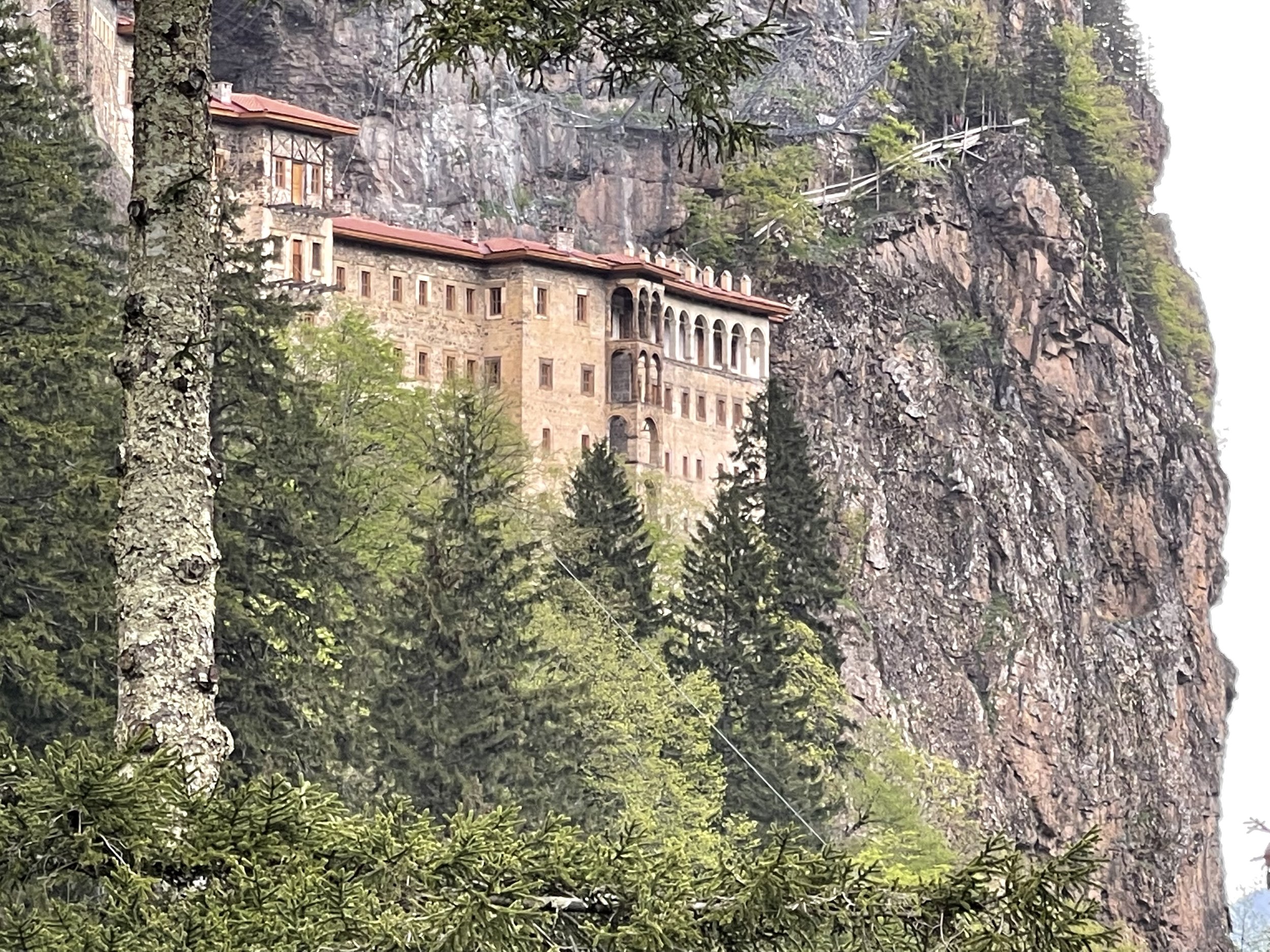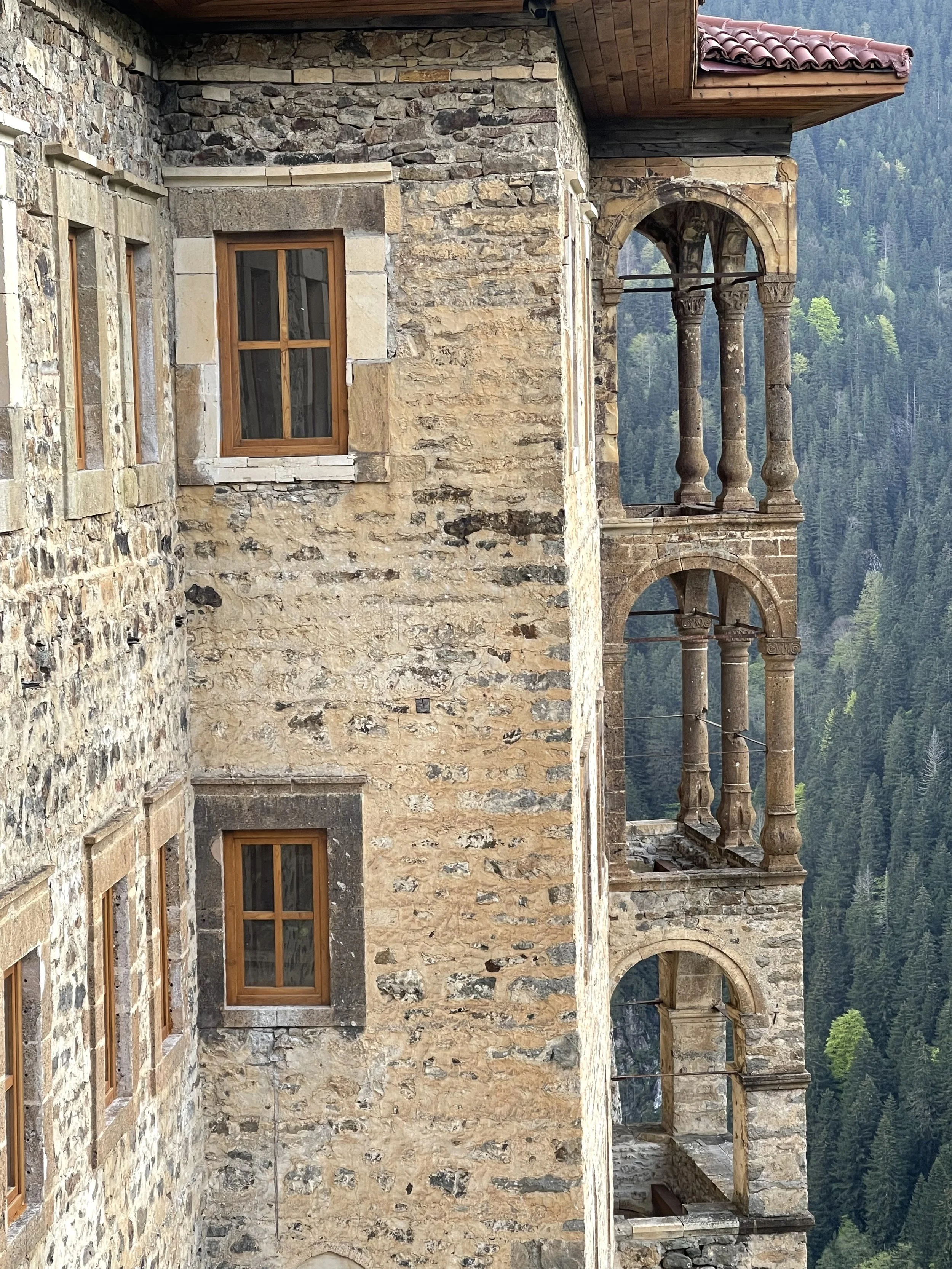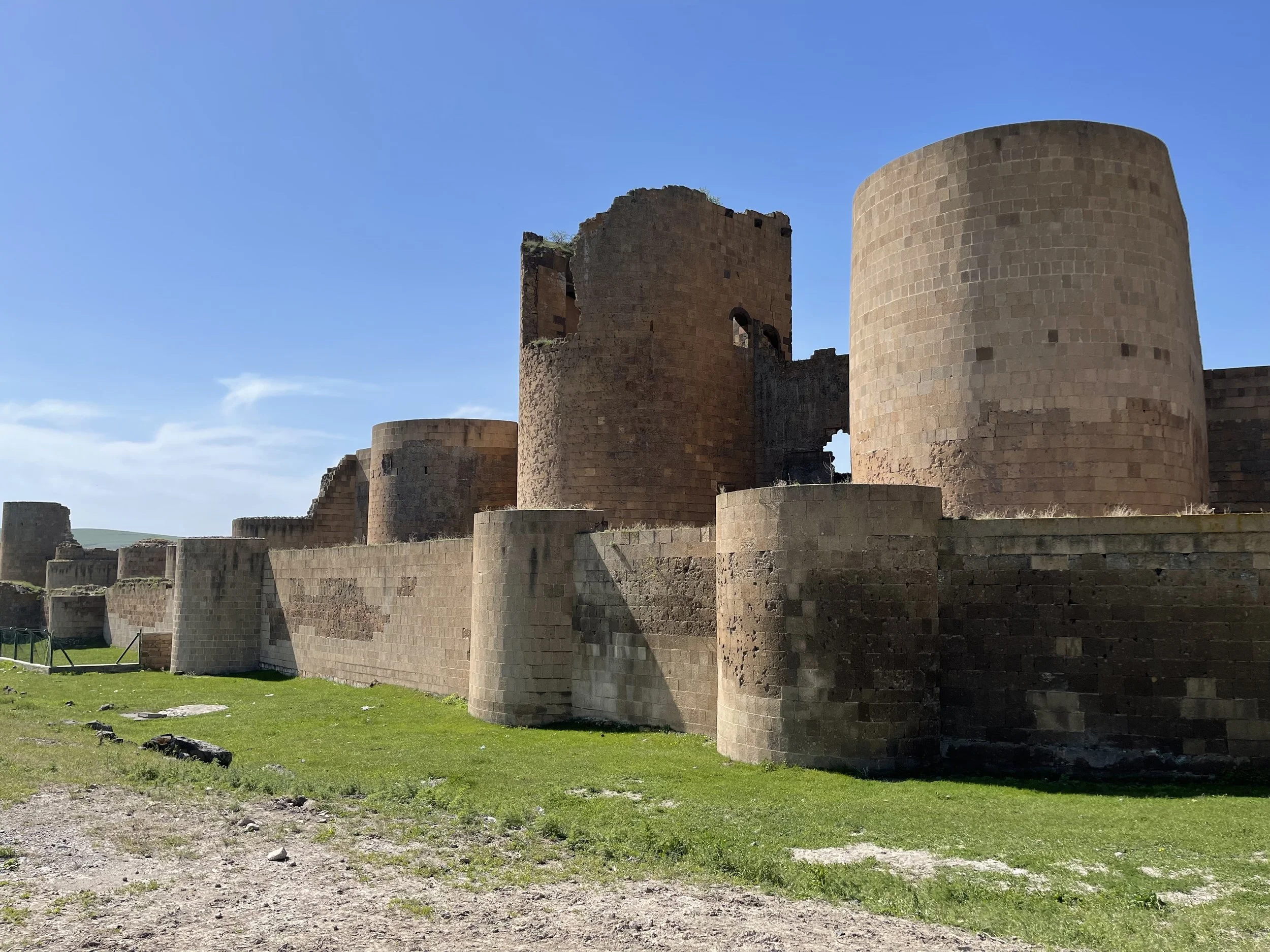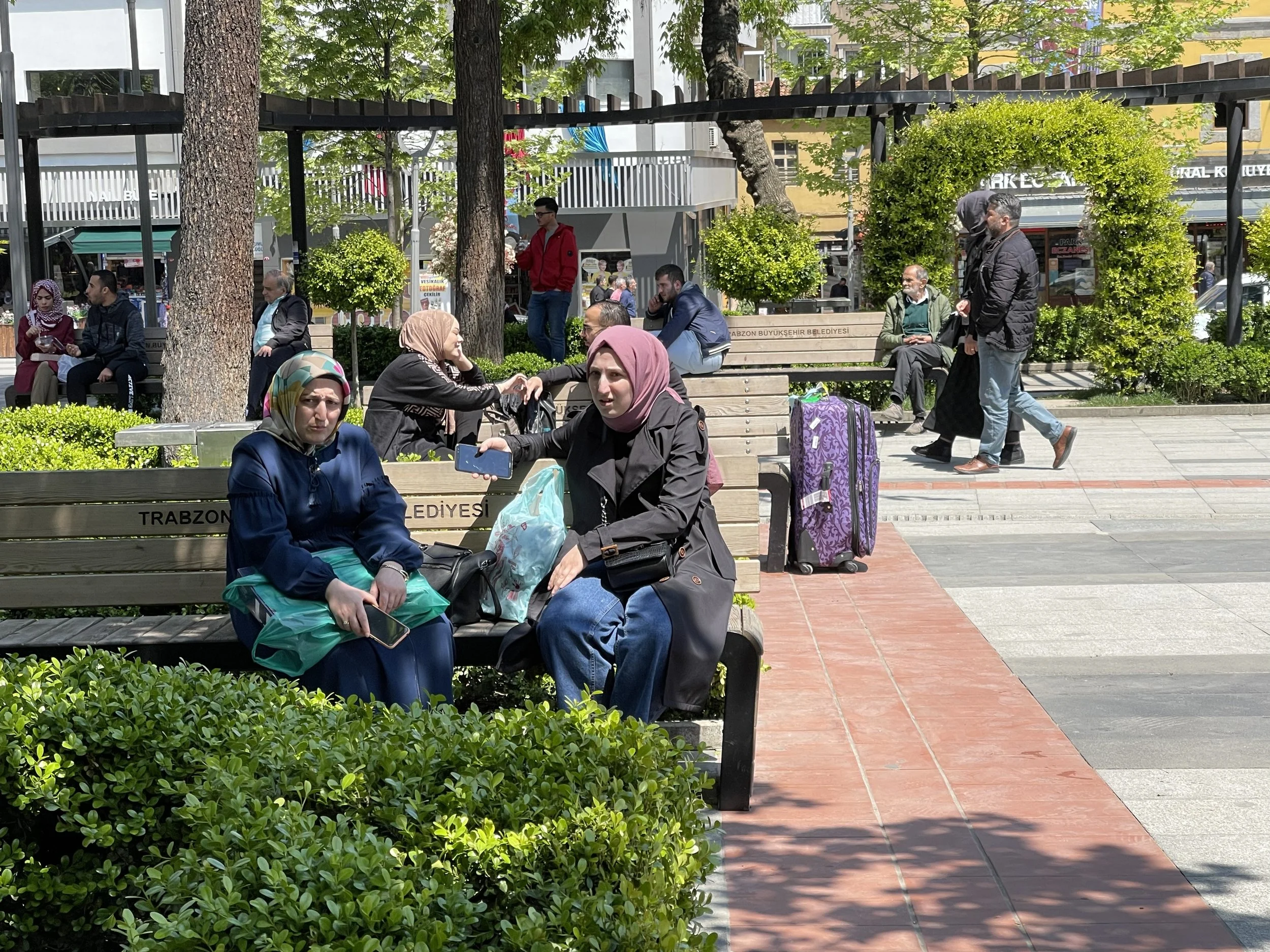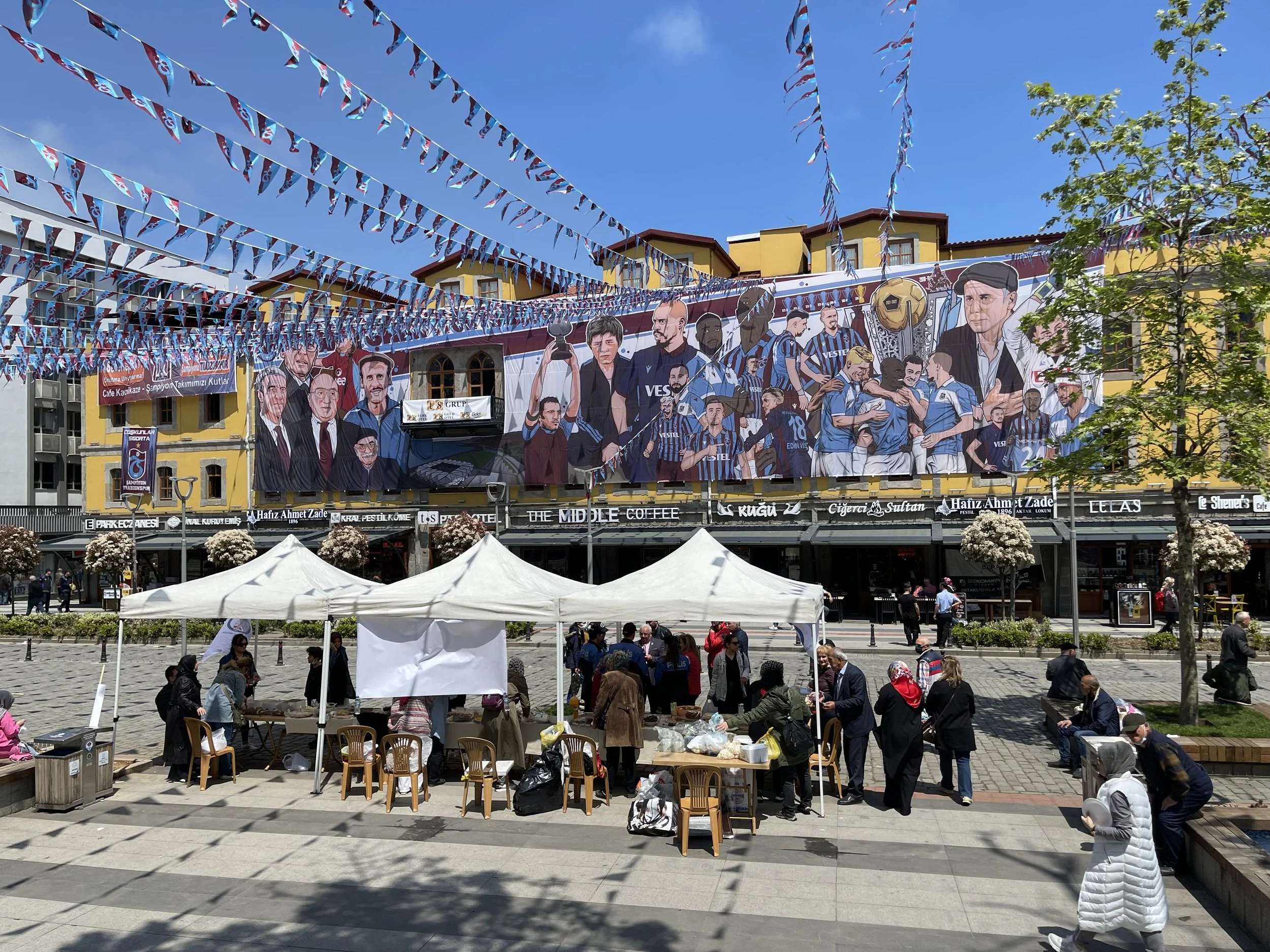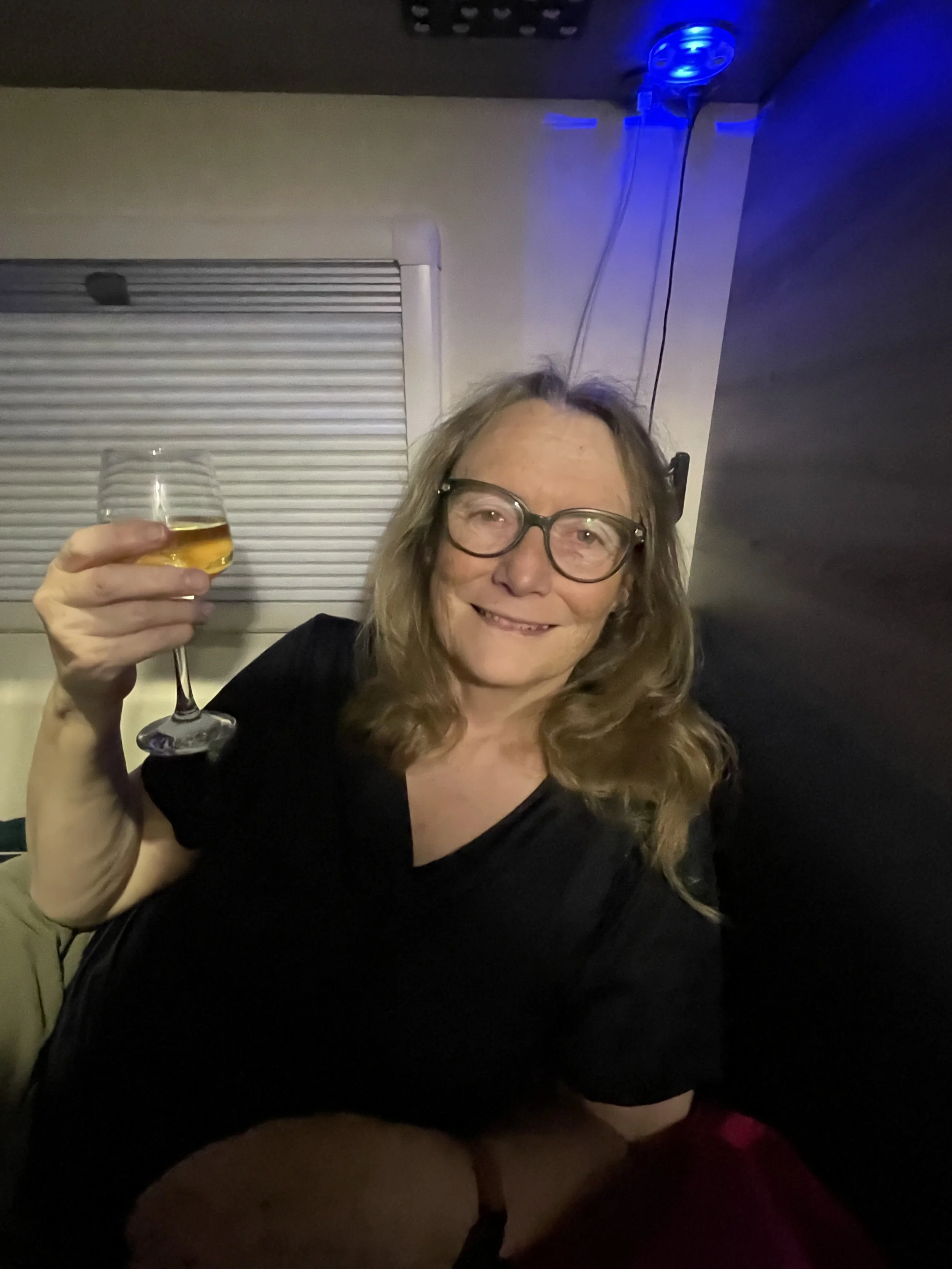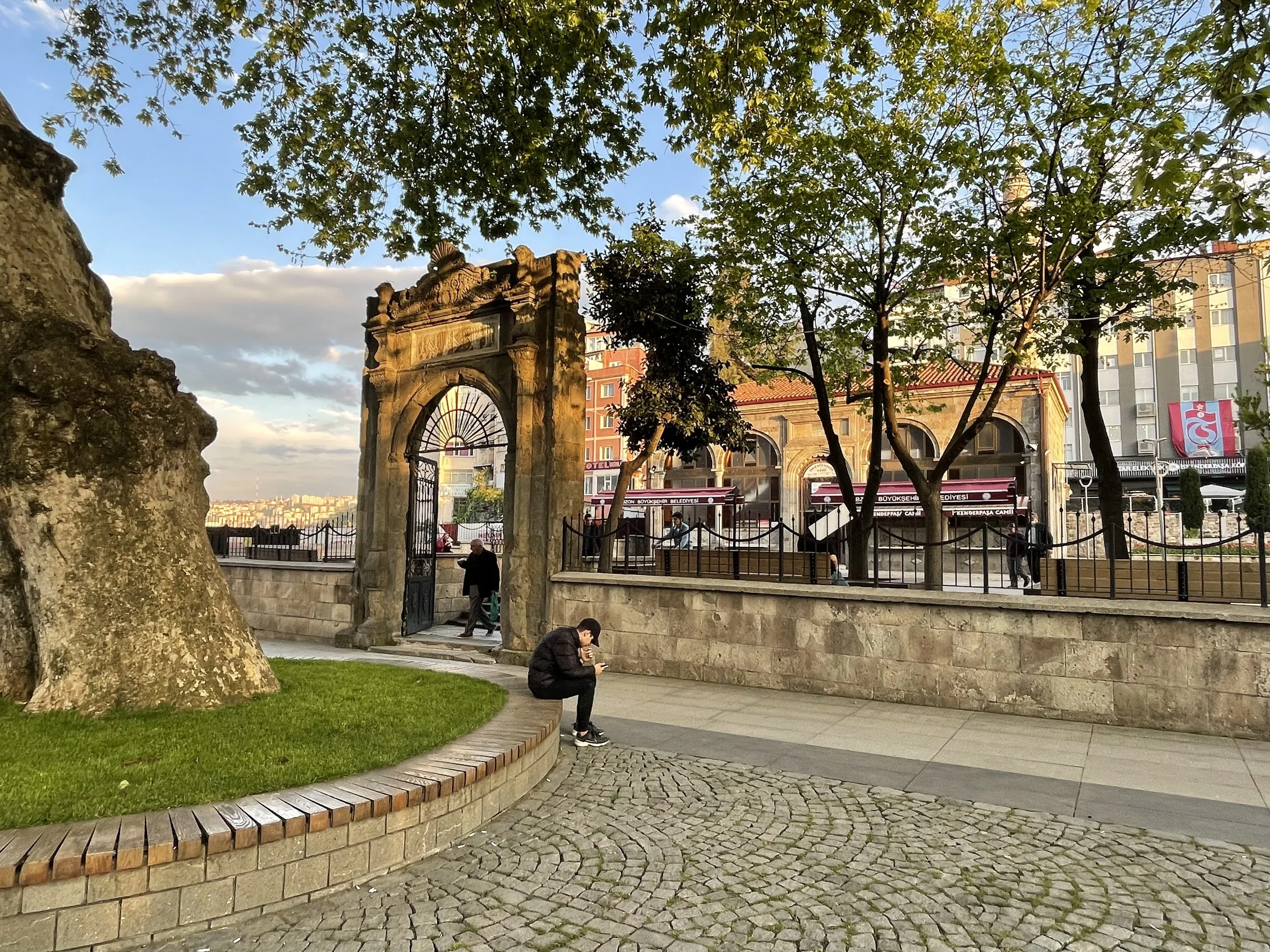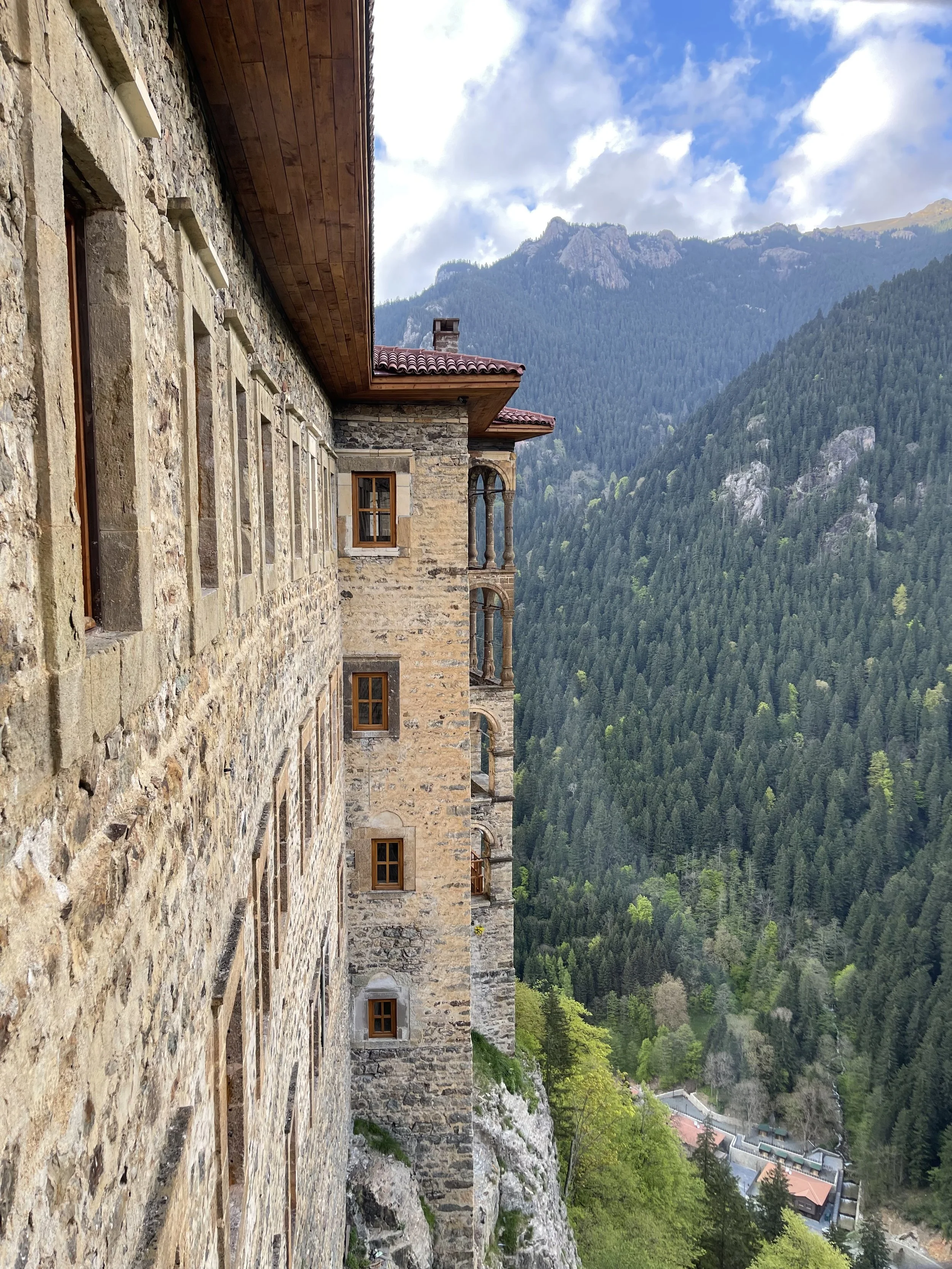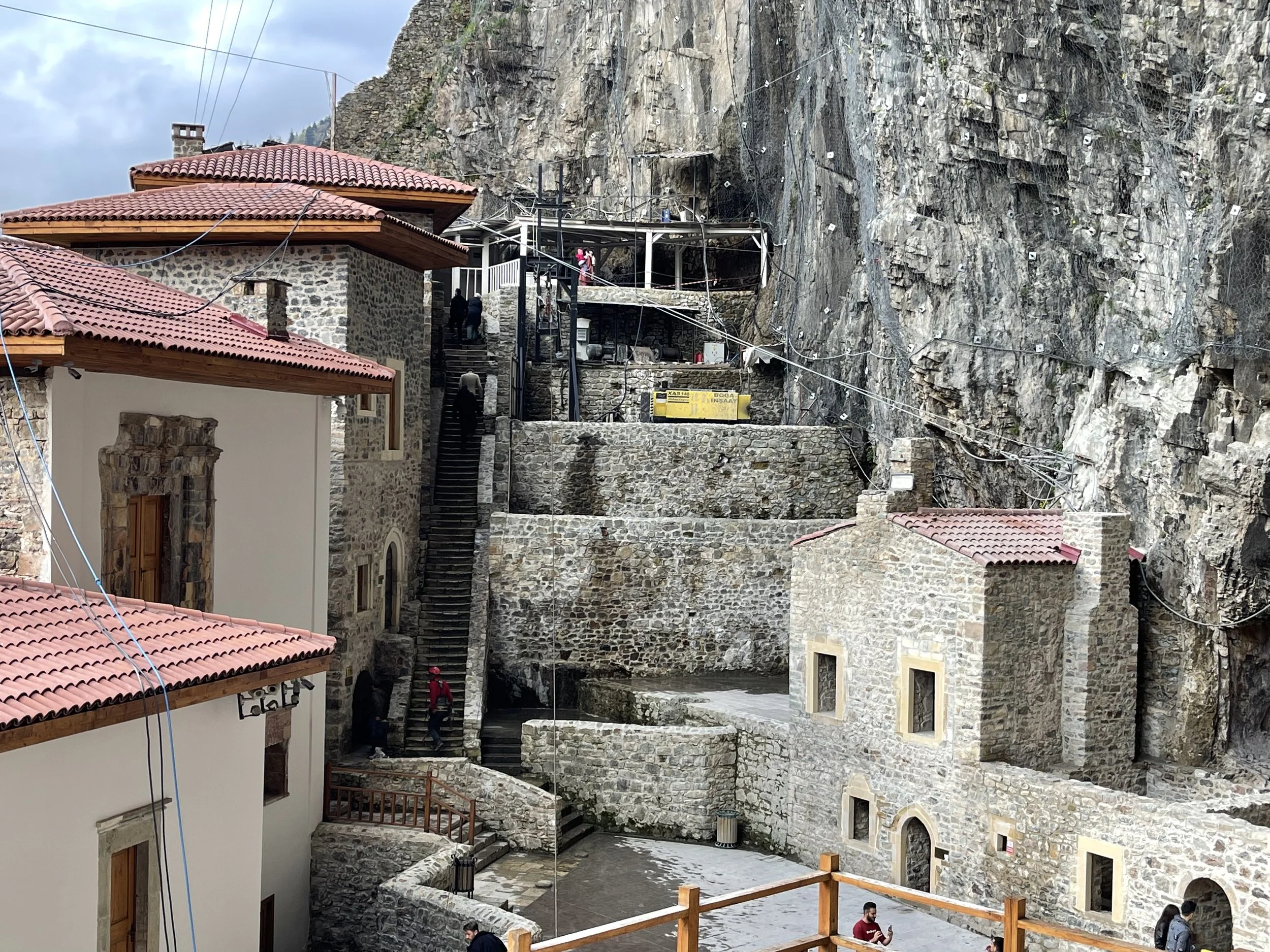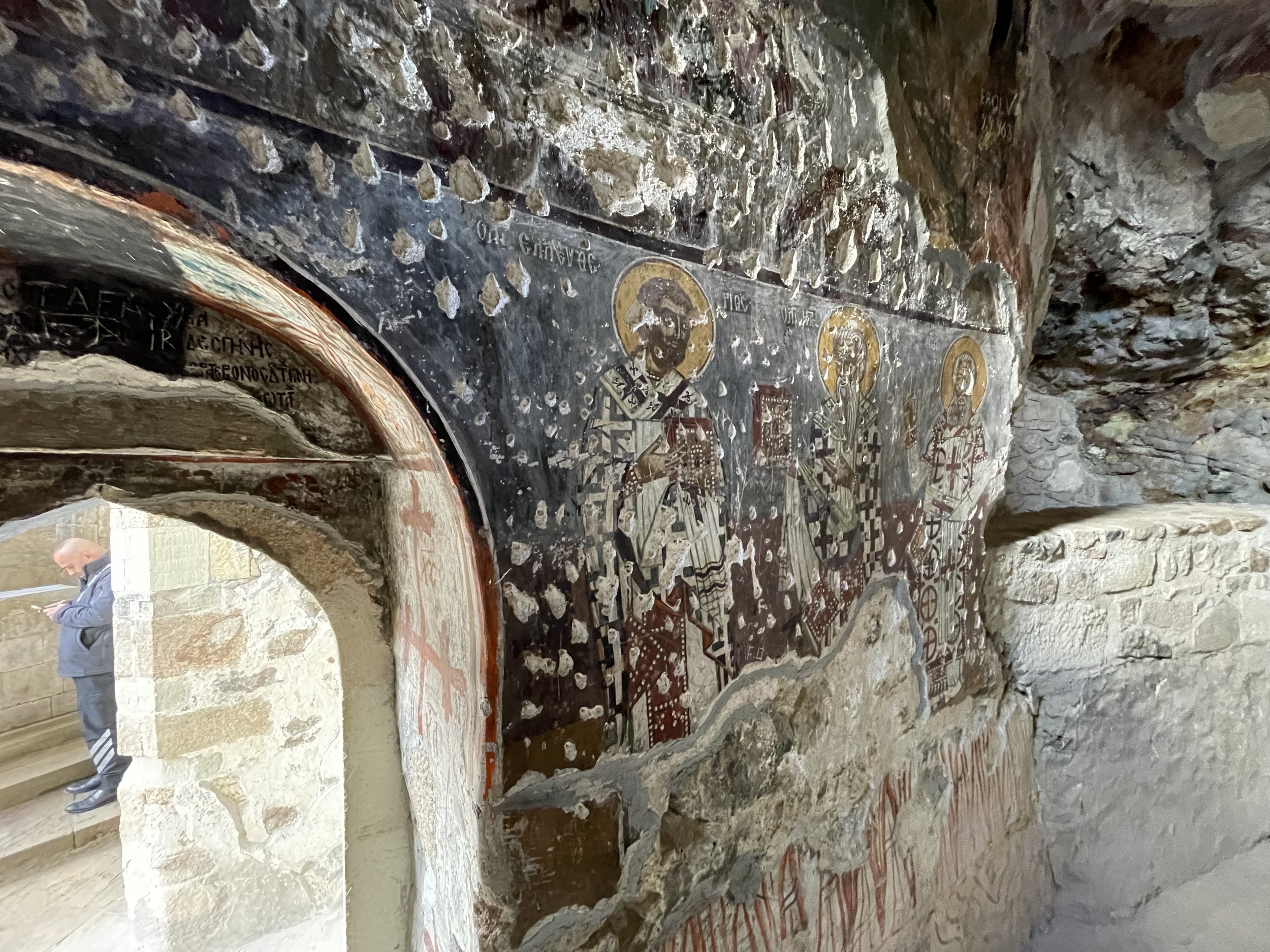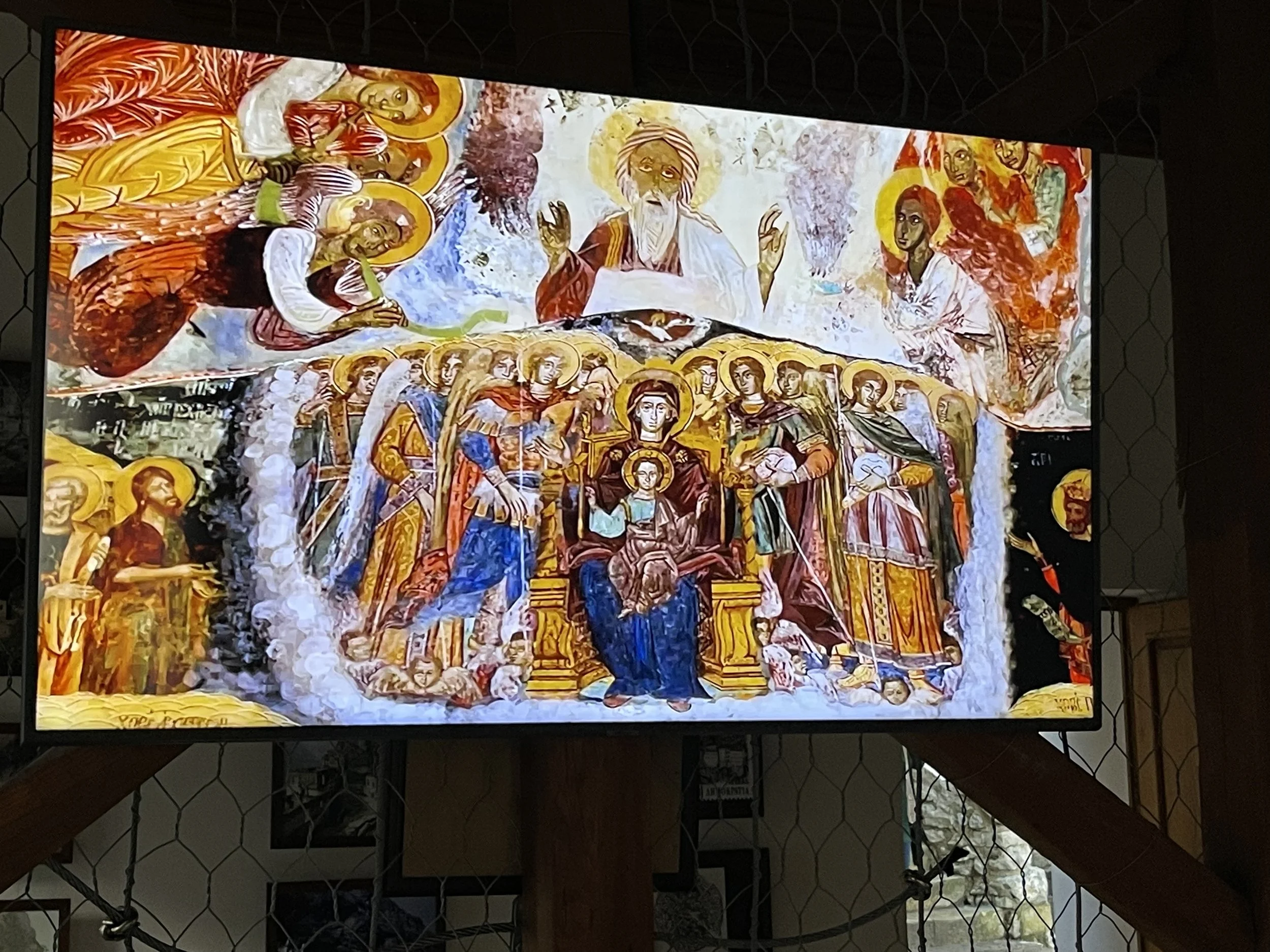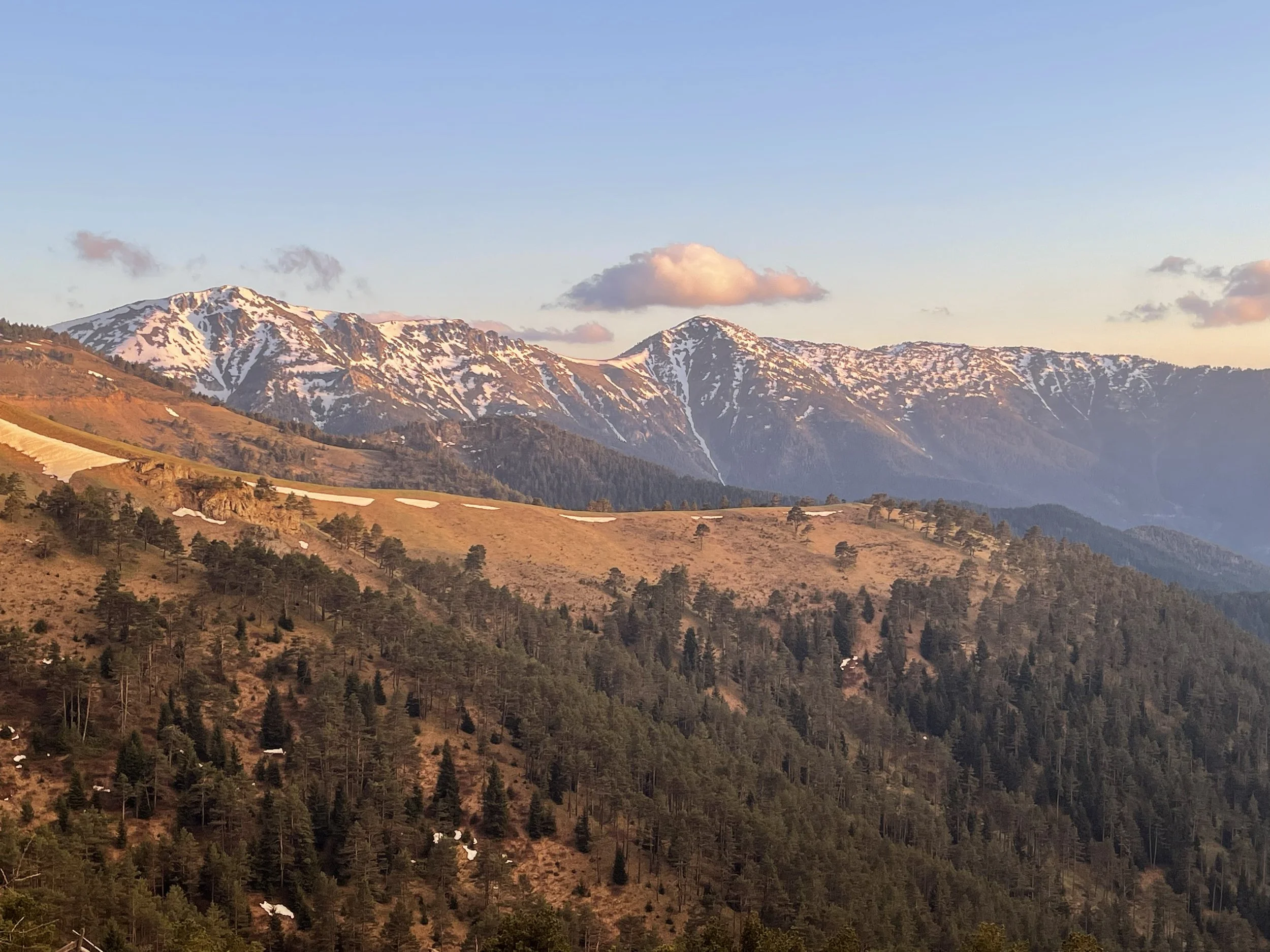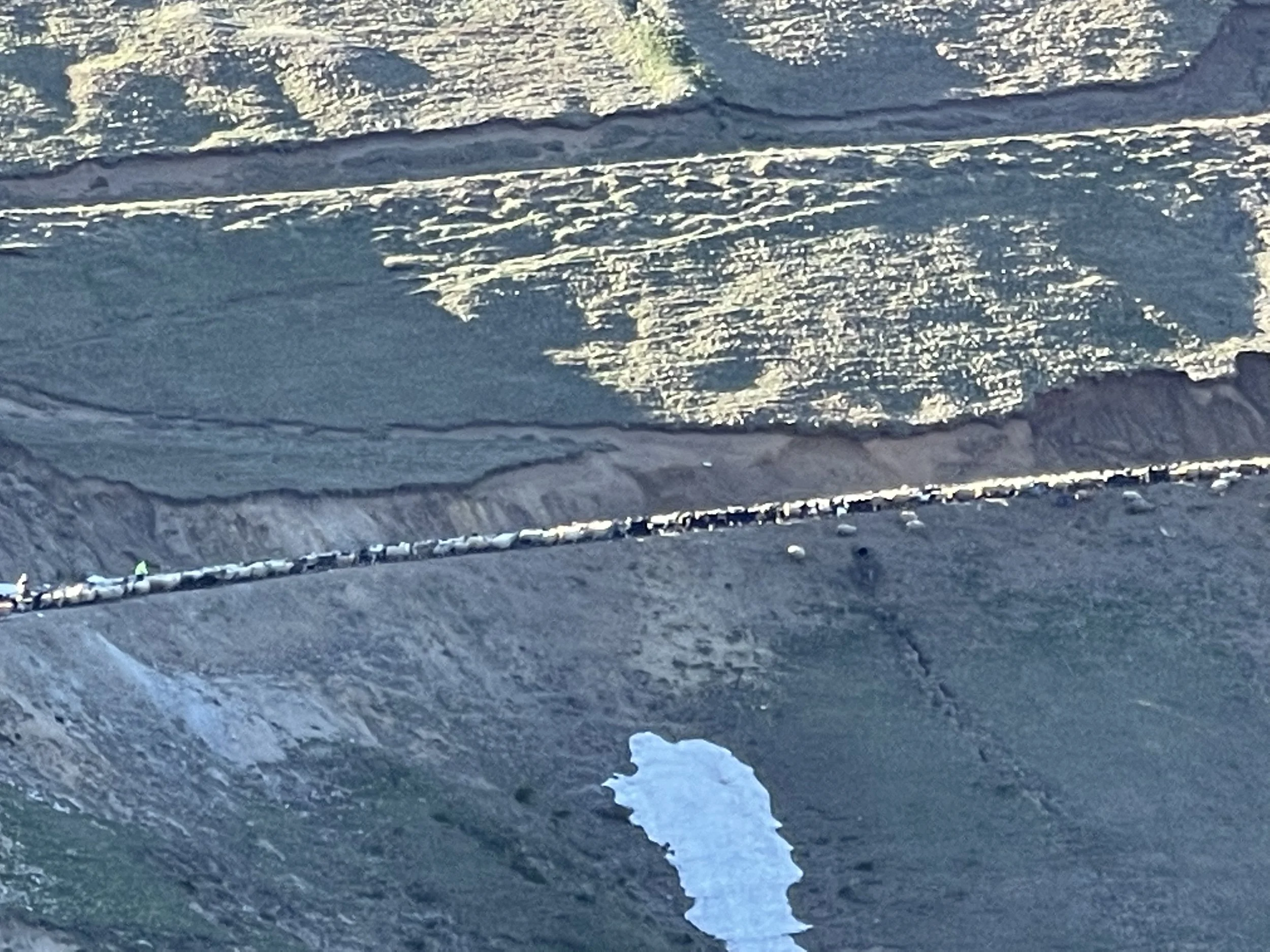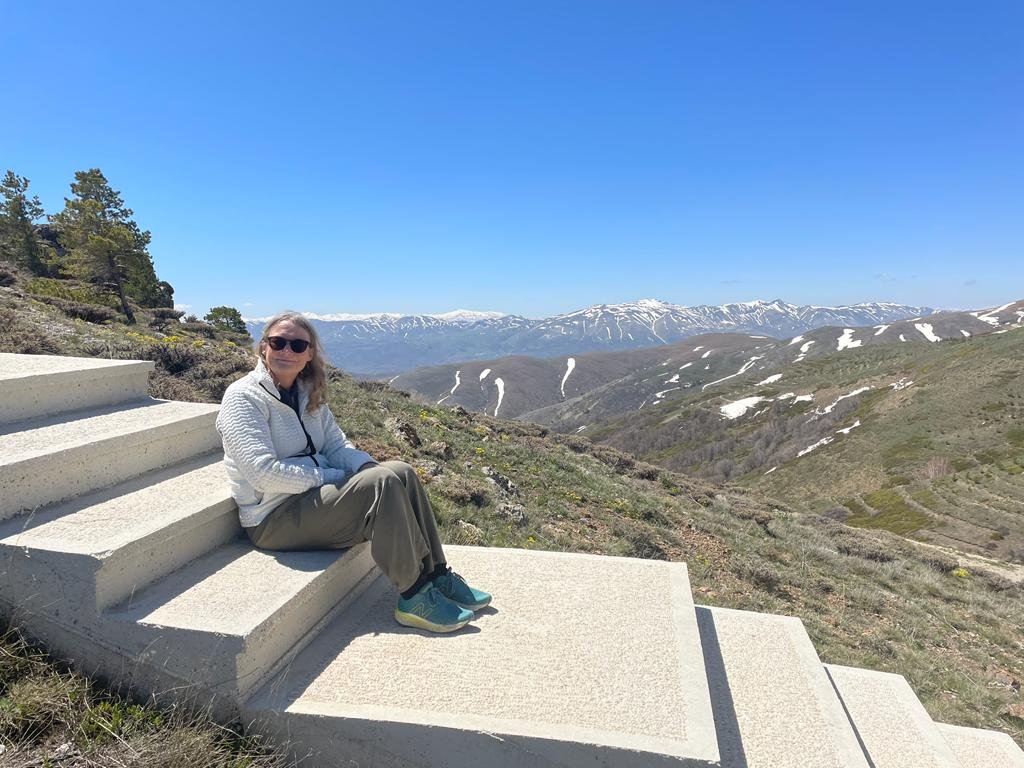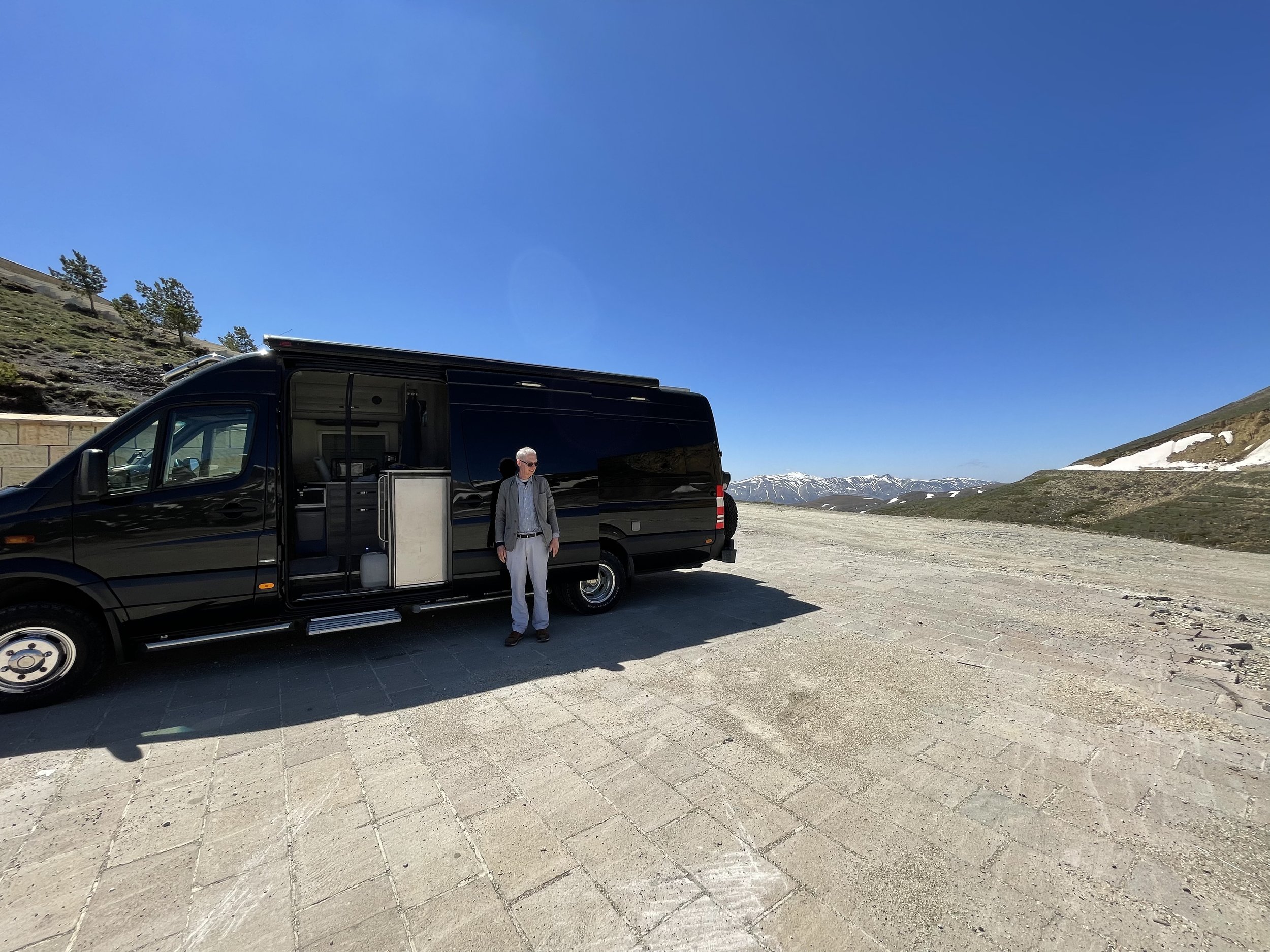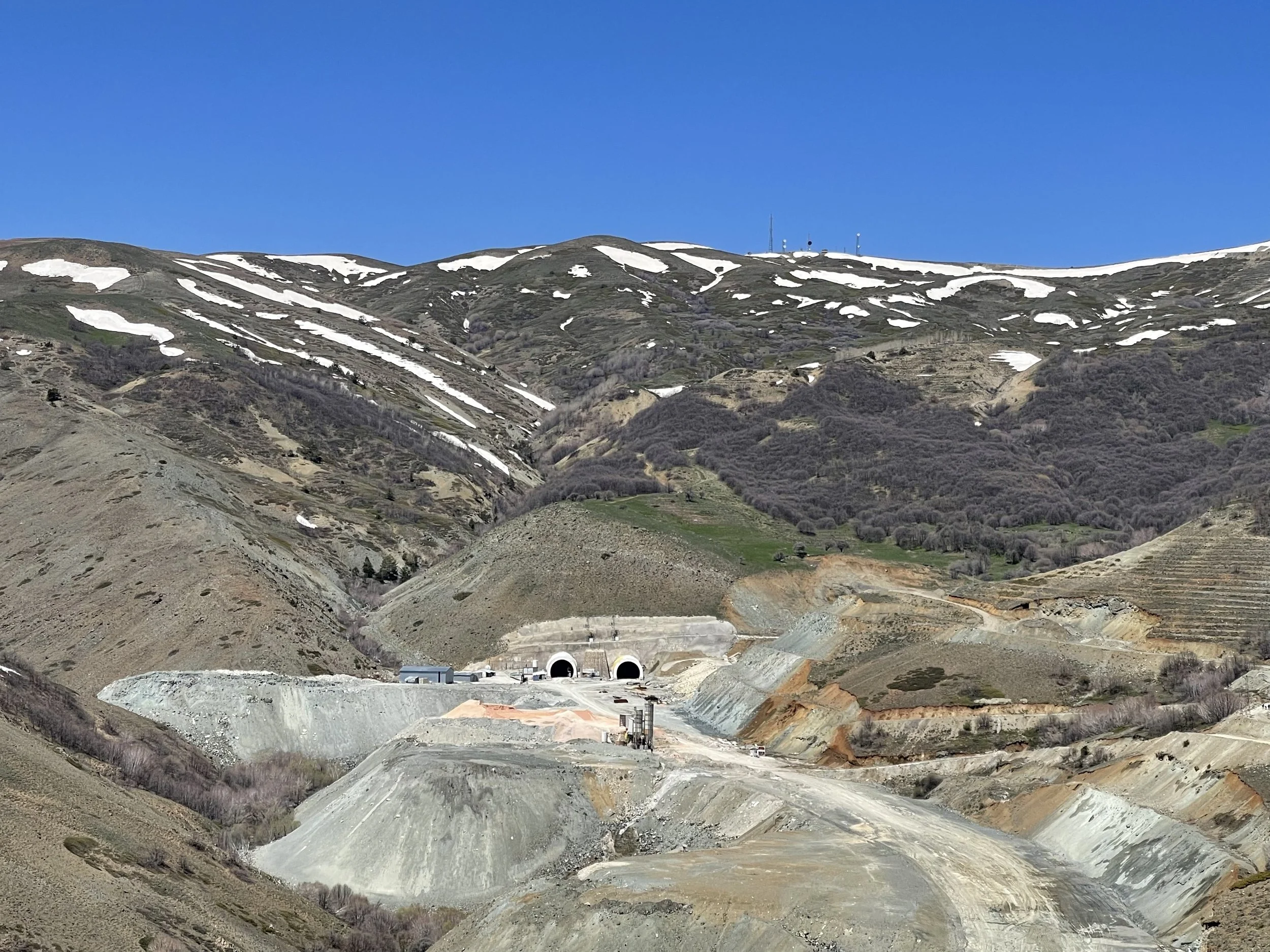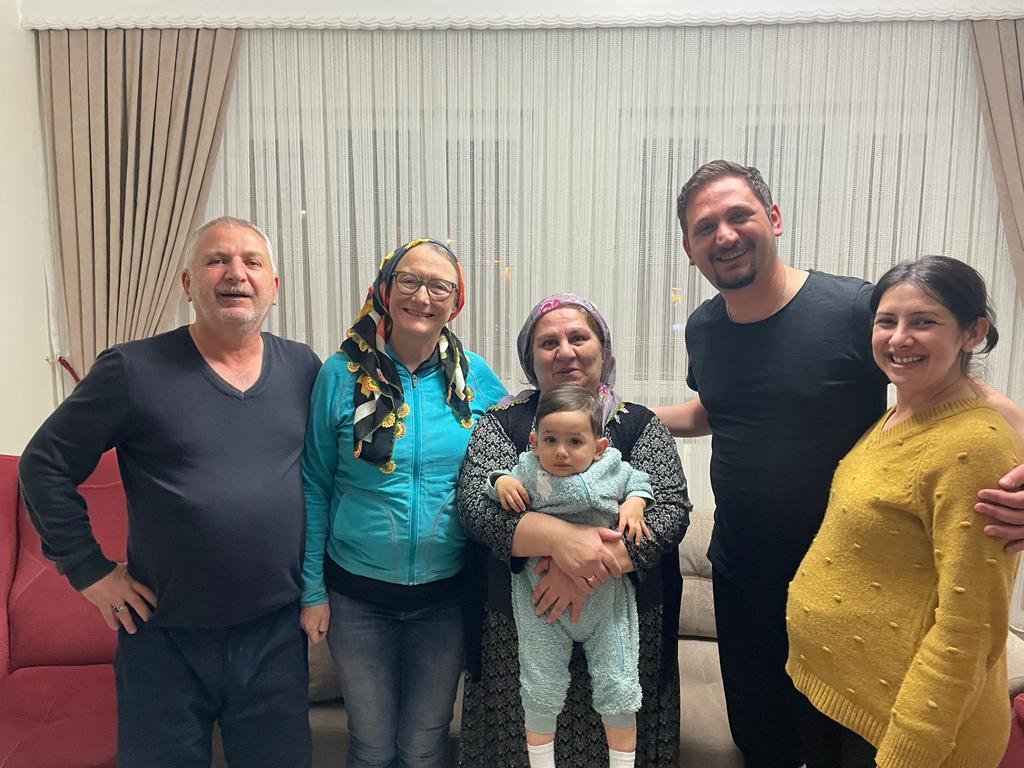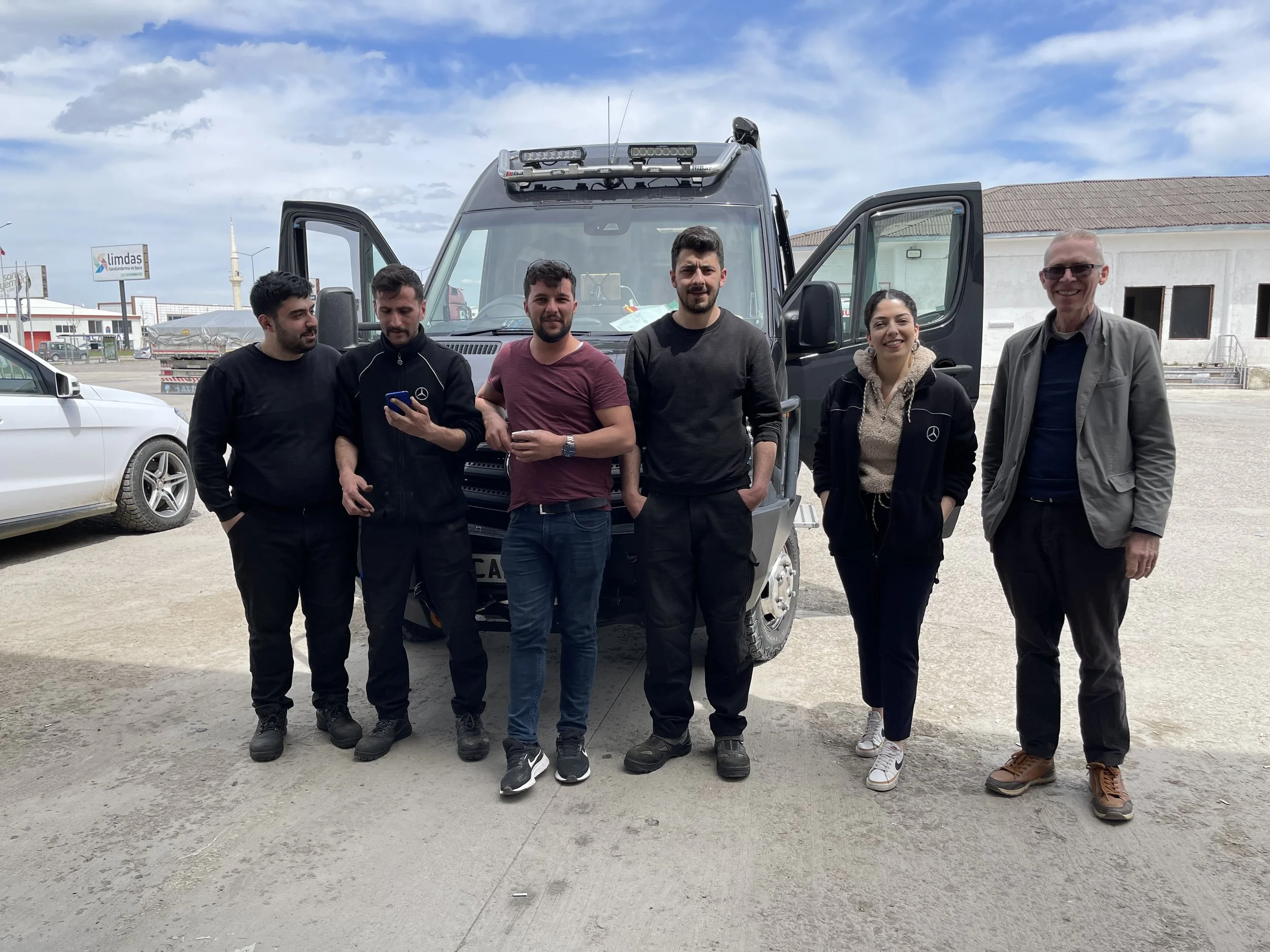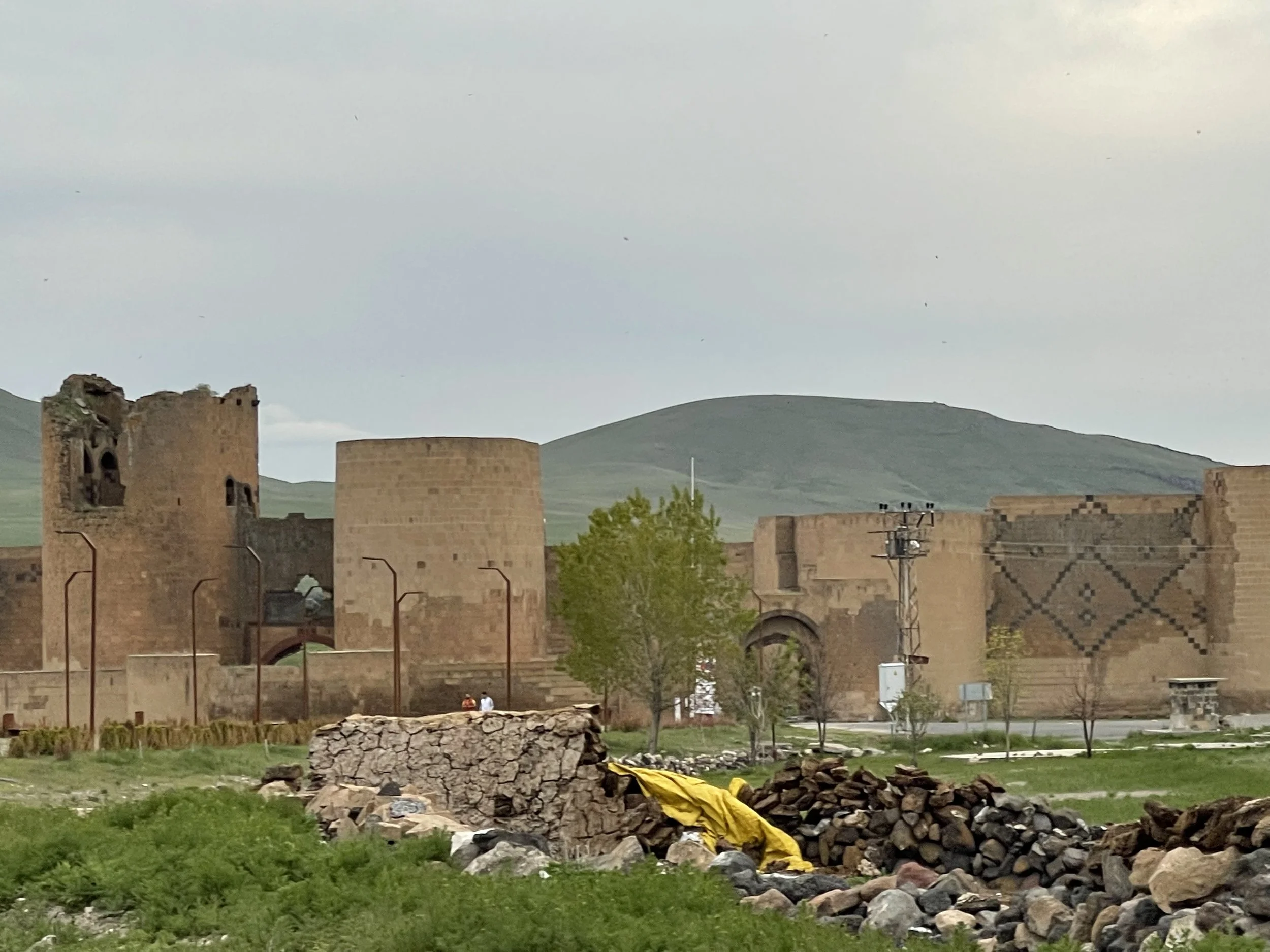Trabzon was on the Black Sea Coast and had the benefit of taking us still towards Georgia, but particularly to visit the nearby Sumelia Monastery.
Jim, the master of detours still had further plans. Rather than take us directly along the coast from Trabzon to the Turkish Border with Georgia, he had plans to take us further inland via Erzurum and Kars, and to a World Heritage site at Ani, but more of that later.
Ani City Walls - World Heritage treasure
In Trabzon itself, we had few objectives, swiftly locating some washing machines, leaving our laundry, finding a spot to camp and returning the next day to saunter around.
On arrival, we left the main road to enter the town, ignoring mapsme entreaties to head up vertical passages or to cross perilous building sites and we decided to take the town by the rear. This meant jostling with umpteen small buses and cars in small streets encircling the higher reaches of town, which became totally jammed with frustrated drivers who cared little about their paintwork. Much to our surprise, we eventually, we found ourselves on the edge of a tree shaded central pedestrian square and we pushed on round to find our parking spot - jokes!
We descended a steep narrow road towards a spot and a large blue P to the right. With some skill I managed to manoeuvre into this even smaller street to find that the parking was underground (too low) and the street was a deadend. The end of the road had become a parking lot too and there was no way to turn without removing all the shop fronts which included the underground car park. I poked my head out of the window and shrugged helplessly. The guys running the parking immediately leapt into action and moved cars out of the alley with keys retained on reception. They shoe horned us in at street level and waved us off to dash to the nearby laundry clutching IKEA bags full of stuff. This was the best laundry ever! Our dirt laundry disappeared and we could come back and collect it. Perfect.
A quick saunter around the square and the finding of many shops selling sugared almonds, the spotting of some historic city walls and a strategically placed Hammani for me, convinced us to take the leisurely approach to the following day.
The central square had a statute of Ataturk and a huge mural of the local Trabzon football team and an excessive quantity of bunting, in team colours, stretched across the square. We later learnt that the team had won the Turkish football league for the first time in 34 years. It was absolutely massive. We were also told who each player was in the mural and also an image of a young boy with the players. We were told that he was a young 13 year old shepherd, who apparently had been killed whilst herding sheep in the countryside, by a terrorist from Iraq. Jim’s line is that this boy may have been murdered by a Kurdish terrorist but it leaves out information about how many Kurds may be been killed by Turkish fighters.
Jim and I found ourselves a carpark next to the sea to overnight in and I settled down that evening to play a weekly game of competitive bridge, on-line, with my bridge partner back in Greenwich, UK. The icing on the cake was that we won! An excuse to celebrate with a glass of Saint Vèran.
I got to the Hammani in Trabzon at 9am and had a couple of hours being scrubbed, peeled and massaged. The scrub was made out of coffee grains and I was smothered in brown slimy coffee smelling gunge. You don’t get a photo of this. No journey to Turkey is complete without this! In my view. Jim in the meantime had found himself a city wall and possibly several museums and a castle! What more could a man ask for? Jim commented that all three museums had exhibits about football in this football crazy town. So different from the British Museum.
The plan was to leave Trabzon after lunch and to make our way up to the Soumelia Monastery and to spend the night close by and visit the following day. The Monastery, originating in 386AD, is nestled in a steep cliff at an altitude of about 1,200 metres (3,900 ft) facing the Altındere valley as well as being a major tourist attraction within Altındere National Park.
Carefully now Jim! We should have brought our poles!
We had read about a great camping spot beneath the monastery and we had visions of sunset/sunrise images. The reality on arrival was very different.
The Monastery itself, and the access to the monastery had had a substantial renovation and now all parking was much lower down in a large car park with no views there, of this epic historic monument. Access to this National Monument was now really expensive, presumably to contribute towards the renovations, plus we paid for parking and we had to pay to get on little buses to reach the monastery! Not quite the remote exclusive experience we had imagined.
We decided to go up and look at the Monastery in the late afternoon and we were then told that our very expensive tickets would not be valid the next day. So we spent less time there than planned. So we decided to visit there and then. However, it was pretty special and spectacularly located.
We vacated the carpark to find somewhere more peaceful to camp, but were warned off little side routes by concerned looking park warders, (they were probably right), so we decided to descend to the valley and continue on our journey towards Erzurum. On approaching a tunnel boring through the mountain Jim had located a potential spot to camp on the top of this mountain pass if we took the old road! We found ourselves in what looked like the top of the world, at or above the snowline outside a tiny village with what looked like the remnants of a ski resort.
The light was fading and our spot was occupied by shepherds warming themselves with a few burning sticks, accompanied by a massive flock of sheep and some fierce looking dogs. So we positioned ourselves between an abandoned hotel and a couple of ski huts. The drops were dramatic enough for us to pop shocks in front of our wheels! We popped out to take sunset photos before shutting up shop for the night. The picture below is the shepherds descending with their sheep around 6am the following morning. We descended the route we had taken up (old road before the tunnel) and returned to the tunnel.
We cannot but remark on the quality and quantity of Turkish road building. There were countless tunnels, well maintained road surfaces and we frequently spied glimpses of new roads forging through mountainous terrain in sparsely populated areas. Where the roads were steep and crossing passes, new roads were coming soon. Less impressive than the roads, was the Sprinter, which was showing less enthusiasm for forging up at around 2,500 metres. In the absence of any new yellow warning lights we assumed that the car was responding to the change in altitude. This was a concern. We assumed it would recover once we had descended. One of the highest passes we had to traverse on our route towards Erzurum and Kars was the Kop pass.
At the top, above the snowline was a memorial. We stopped and climbed up to the Turkish flag and read the inscription. In this beautiful, but remote, inhospitable place, the memorial commemorated the loss of Turkish fighters, in 1918. The assumption is that the invaders referred to at that time were Russian.
As we descended we saw two more tunnel bores underpassing the Kop Peak. We reflected that very soon, very few people would ever pass the monument to those lost as the traffic would sweep through far below.
By the time we had descended to Erzurum the van had deteriorated and it was doubtful therefore that the lack of power was due to altitude. We limped around looking for a lunch stop and finally abandoned lunch entirely on the grounds that we were likely to come to a complete halt shortly. We therefore made it to the local Mercedes garage. (The only one for 100 kilometers). This one pretended to sell cars, had none in the empty show room but had a sizeable staff engaged in maintaining fleets of Mercedes trucks, buses and cars. Whilst they had never seen a Sprinter quite like ours they were happy to resolve our problems. We explained about the Samsun stop and the Ad Blue warnings and how there were now no new warnings. Several cups of coffee and cake later were were invited to inspect the car. They reported that ad blue had vitrified into large rocky chunks around the exhaust system. And these chunks were wedged in and around the exhaust and had to be chipped off. They then removed the exhaust system which also controlled the mixing of ad blue with the fuel system - I might get this wrong - but what they did show me was an exhaust system stuffed with solid Ad Blue which would take a while to extract. He said that we were very close to a catastrophic disaster for the engine. They blamed a broken clamp on the exhaust, but Jim blamed our previous fill up of Ad Blue. Whilst repairs were ensuing, the day was passing and Bilal, the Manager kindly asked if we would like to have dinner with his pregnant wife and son when the van was fixed.
We agreed and travelled to his home in Erzurum where we were offered a shower, which we accepted! Make of that what you will. We then enjoyed a lovely meal. From his spacious and spart flat in Erzurum, we also were Skyped in to meet other family members on line. Plus the parents who lived nearby popped over and offered tea (and sweets) in their large and well appointed flat. Bilal had been brought up there by his caring family and clearly loved his wife and son. Childcare support from his parents was close by. I acquired more scarves and we gave them a London Bus and a compass!
Rather strangely we slept in the van, in the street at the bottom of his flats. Unusually I woke up early and urged Jim to leave so we could make up some time. Unbelievably, for the first time ever, although the engine started, the car would not move more than a few inches back and forth! This meant we had to contact Mr Mercedes (Bilal) upstairs in his flat and ask for further assistance. As is the case these days, any diagnosis requires a man with a computer rather than a screwdriver. An hour or so later he arrived and said our Parktronic system was dirty and preventing the car from moving. (I am doubtful about this as the car had only been cleaned a couple of days earlier). But still, it now agreed to move. I dont want to be boring here, but we got an hour out of Erzurum when the Ad Blue warning light reappeared, so we turned round again. This time, Jim insisted that whatever the computer diagnosis was, we wanted them to totally remove all the ad blue in the tank and refill it with uncontaminated product. This was eventually done. Not until we had been given a Mercedes lunch in the staff canteen. It was very much like a truck stop with one menu in plastic plates with small compartments for yoghourt and pasta! A strange thing, the receptionist cum book keeper was reading a very large volume of Jane Eyre in Turkish! She was lovely and posing with the lads in the photo before we left for the last time.
When we left Erzurum we promised to let the garage know when we had arrived in Kars. He promised to send out a man with a computer if we broke down again!
We noticed a difference in this corner of Turkey. Even though the roads were better than expected, the quality of buildings, in which people were living in pretty harsh conditions, in the countryside, was poor. People were living in places without windows or proper insulation. Doors were missing and it appeared that some people were living under lean too’s or tarpaulins. There were also brick or breeze block structures with corrugated iron roofs but also older buildings with earth and grass roofs for insulation. There were few if any trees. We were not sure what was being used for fuel. Could it have been dried blocks of manure which were covered in blue plastic next to buildings. Jim wondered if they were peat blocks. We also wondered about the ownership of the grazing animals? There were far too many for one poor farmer to own in this Kars province. Were these government cooperative?

